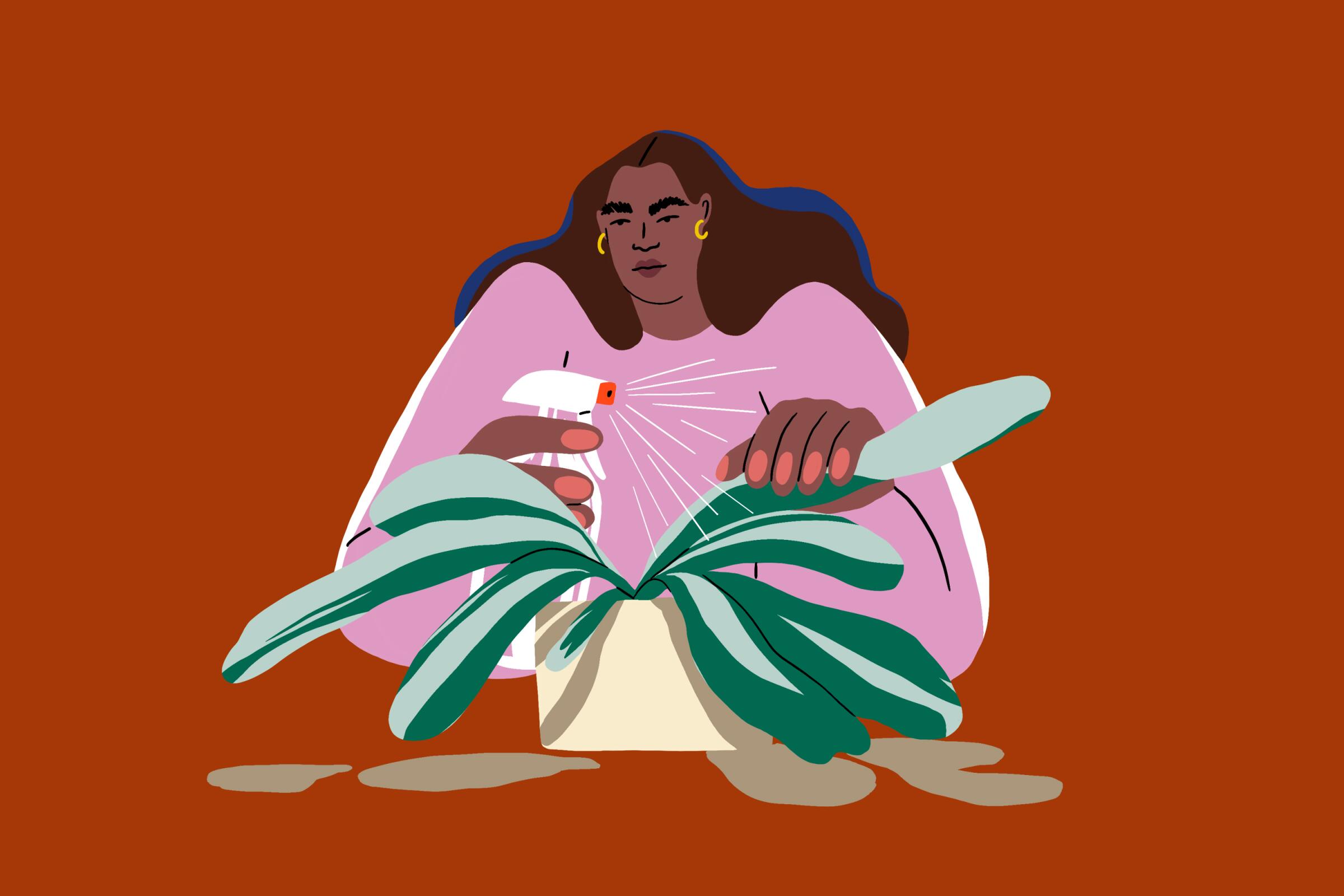Sign up for The Wild
We’ll help you find the best places to hike, bike and run, as well as the perfect silent spots for meditation and yoga.
You may occasionally receive promotional content from the Los Angeles Times.

The leaves of your Fittonia verschaffeltii are brown and brittle and aren’t growing back.
What’s going on?
“Some plants thrive in humidity,” explains Hank Jenkins of the Plant Provocateur in Silver Lake. “If you don’t give them moisture, their leaves will dry out. If you want new foliage and growth, you need to mist them.”
Many houseplants come from subtropical and tropical regions and need a “relative humidity of at least 40 percent,” according to “Reader’s Digest Success With House Plants.”
”L.A. is a coastal desert,” explains Jenkins. “The humidity here is different from the humidity in South America or Mexico or Central America.”
So if a humidity-loving philodendron is placed in air that is too dry — or next to a heating or air conditioning vent — its leaves may shrivel and turn brown.
“A lot of people don’t understand the importance of misting,” adds Jenkins. “Misting is one of the top things that you can do for your houseplants. I advise my clients to mist their houseplants one to two times per week.”
Thirsty? Lack of light? Need to get rid of gnats? Here are the answers to the most frequently asked questions about houseplants.
Generally speaking, thinner leaves are an indication a plant will need extra humidity. But be careful not to mist succulents or Zamioculcas zamiifolia, affectionately known as the ZZ plant, as they are quick to rot from excess moisture.
Because Los Angeles tap water includes calcium carbonate, Rhiannon Cramm of Mickey Hargitay Plants advises misting houseplants with filtered water to prevent calcium deposits from forming on the leaves.”
Along with misting, Cramm suggests placing plants on pebble trays for added moisture. Fill a tray or saucer with pebbles and add water. When you place your plant on top of the pebbles, it will sit above the water, creating a humid environment.
Humidifiers are common in local plant shops and can be used to stimulate plants at home. “Humidifiers are fun and beneficial because they create a cloudlike plume that can set the mood for your tropical plant friends,” Cramm says. “More advanced models can set a humidity percentage and automatically turn on and off when your desired setting is reached.”
But you don’t have to purchase a machine to add moisture to the air. “Another way of providing humidity to plants without spending money or putting in effort is to simply group plants together,” says Mickey Hargitay Jr. “It is through their transpiration — water loss through the pores in the surface of the leaves — that humidity is created naturally. Therefore, humidity-loving plants do better together.”
Moving a distressed plant to a more humid location, like the bathroom or near the kitchen sink, also can help. When I moved my dying nerve plant from my sun-filled living room to the bathroom, it bounced back. When I placed it on top of a pebble tray and started misting it regularly, it thrived.
“Misting is basically the secret weapon to having perfect plants,” Jenkins says. “It’s no effort. And you can fertilize your plants that way.”
Sign up for The Wild
We’ll help you find the best places to hike, bike and run, as well as the perfect silent spots for meditation and yoga.
You may occasionally receive promotional content from the Los Angeles Times.